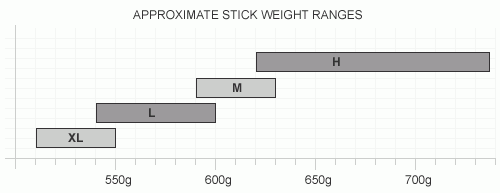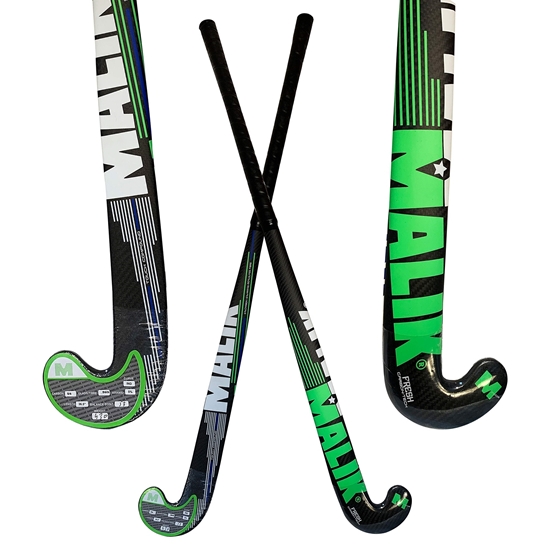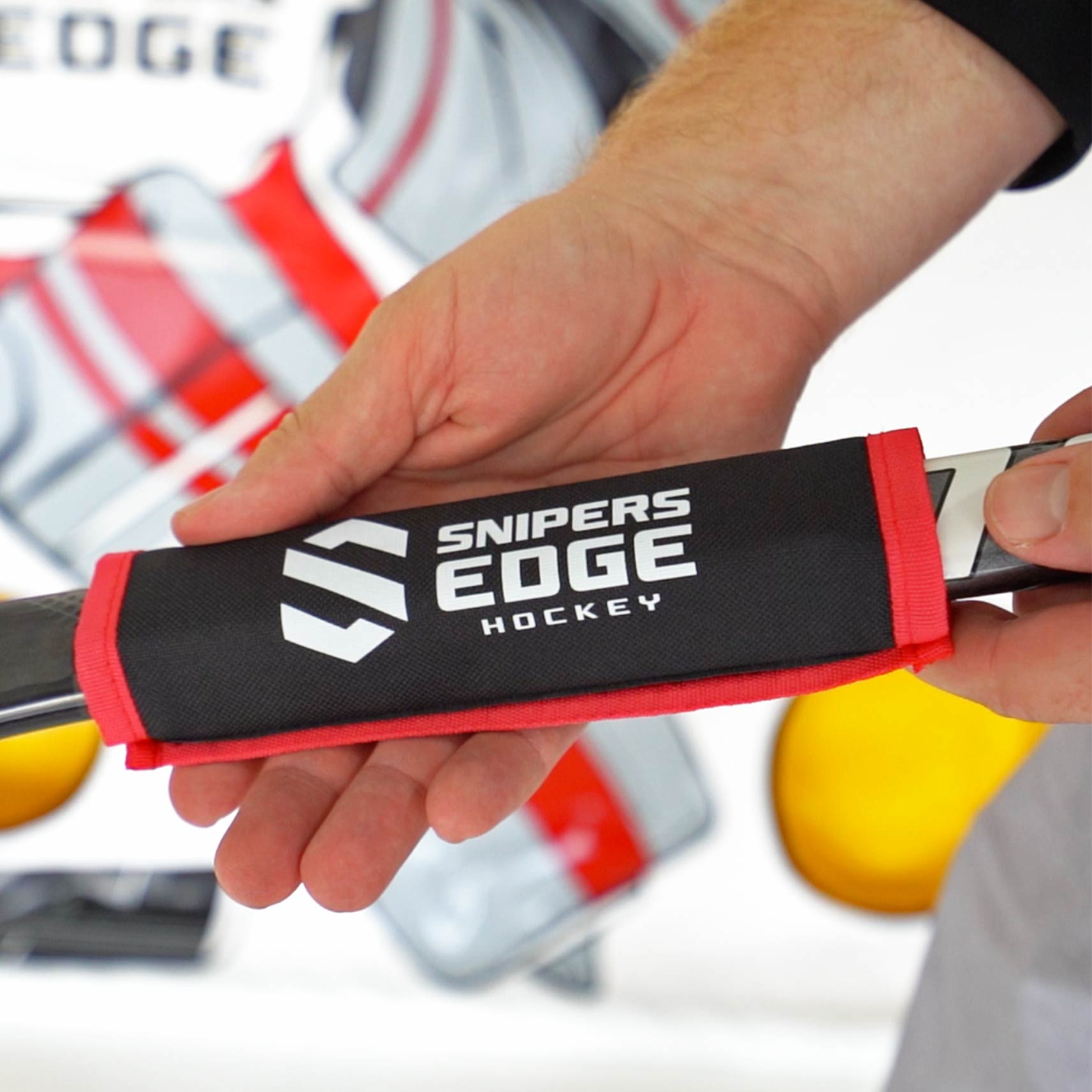The weight of a hockey stick varies. It depends on the material and design.
Typically, hockey sticks weigh between 400 and 700 grams. A hockey stick’s weight impacts a player’s performance. Lighter sticks offer better control and quicker movements. Heavier sticks provide more power for shots. Players often choose based on their style and position.
For forwards, a lighter stick can help with speed and agility. Defensemen may prefer heavier sticks for stronger checks and shots. Understanding the weight of a hockey stick helps players make better choices. It improves their game and enhances their experience on the ice. In this blog, we explore the factors that influence the weight of hockey sticks and how to choose the right one for you.

Credit: www.allrounderhockey.com
Factors Affecting Hockey Stick Weight
Hockey players often ask about the weight of their sticks. The weight affects handling, performance, and comfort. Several factors contribute to the overall weight of a hockey stick. Understanding these factors helps players make informed choices.
Material Composition
The material of a hockey stick greatly influences its weight. Modern sticks often use carbon fiber, fiberglass, or a blend of both. Carbon fiber sticks are lighter and provide better performance. Fiberglass sticks are heavier but more durable. Some sticks mix both materials to balance weight and strength.
Stick Length
Stick length also affects the weight of a hockey stick. Longer sticks weigh more due to additional material. Players must choose the right length for their height and play style. A longer stick offers better reach but adds weight. A shorter stick weighs less and provides better control.

Credit: www.fieldhockeysticksusa.com
Weight Categories For Hockey Sticks
Hockey sticks come in various weight categories, each catering to different player preferences and styles. Choosing the right stick weight can impact your performance on the ice. Let’s explore the three main categories: Lightweight, Midweight, and Heavyweight sticks.
Lightweight Sticks
Lightweight sticks weigh between 350 to 450 grams. They are ideal for players who need speed and agility. These sticks offer quick handling and faster shots. Many forwards prefer lightweight sticks for their quick wrist shots and dekes.
- Weight Range: 350-450 grams
- Preferred by forwards
- Benefits: Speed, agility, quick handling
Midweight Sticks
Midweight sticks range from 450 to 550 grams. They provide a balance of power and control. Players who need both solid shots and good stickhandling often choose midweight sticks. These are suitable for both forwards and defensemen.
- Weight Range: 450-550 grams
- Balanced performance
- Benefits: Power, control, versatility
Heavyweight Sticks
Heavyweight sticks weigh over 550 grams. They offer maximum power and durability. Defensemen and physical players often prefer these sticks. Heavyweight sticks can deliver powerful slap shots and withstand hard checks.
- Weight Range: 550 grams and above
- Preferred by defensemen
- Benefits: Power, durability, strength
Choosing The Right Stick Weight
Choosing the right hockey stick weight can impact your game. A stick’s weight affects your control, speed, and stamina. It’s crucial to find a stick that complements your playing style and position. Let’s explore what to consider.
Player Position
Your position on the ice determines your stick weight needs. Forwards often prefer lighter sticks. They help with quick movements and faster shots. Defensemen, on the other hand, may choose heavier sticks. They provide better stability and powerful checks.
Playing Style
Your playing style also influences the ideal stick weight. Aggressive players may benefit from a heavier stick. It offers more power and durability. Skilled players who focus on speed and agility might prefer lighter sticks. They allow for quicker handling and faster response times.

Credit: www.snipersedgehockey.com
Impact Of Stick Weight On Performance
The weight of a hockey stick can significantly affect a player’s performance. Choosing the right stick weight is crucial. It can influence speed, agility, shot power, and control. Let’s explore how stick weight impacts these elements.
Speed And Agility
A lighter stick can improve speed and agility. Players can move quickly on the ice. They can change direction with ease. This is important during fast-paced games. A lighter stick helps in swift puck handling. It allows for quicker reactions and better maneuverability.
Shot Power And Control
Heavier sticks provide more power. Players can shoot the puck harder. This can be beneficial during power plays. However, control can be harder with a heavier stick. It can be more challenging to handle the puck. Finding a balance between power and control is key. Some players prefer medium-weight sticks. These offer a blend of power and control.
Choosing the right stick weight depends on personal preference. It also depends on the player’s role on the team. Experimenting with different weights can help find the best fit.
Caring For Your Hockey Stick
Caring for your hockey stick is essential for its longevity and performance. A well-maintained stick not only improves your game but also ensures you get the most value out of your investment. Below are some tips on proper storage and regular maintenance.
Proper Storage
Proper storage is crucial to maintain your hockey stick’s condition. Always store your stick in a dry place. Moisture can weaken the stick and cause it to break easily.
Keep your hockey stick away from extreme temperatures. High heat or cold can warp or crack the stick. A temperature-controlled environment is ideal.
Use a stick rack or holder. This will keep your stick in an upright position and prevent any warping.
Regular Maintenance
Regular maintenance is key to the longevity of your stick. Check your stick for cracks or damage before and after each use. This can prevent further damage during play.
Tape the blade and handle regularly. This provides better grip and protects the stick from wear and tear. Replace worn-out tape immediately.
Clean your stick after each game. Use a damp cloth to remove dirt and debris. Dry it thoroughly to prevent moisture damage.
Inspect the blade for any nicks or chips. Smooth out any rough edges with sandpaper. This keeps your stick in top shape.
Remember, a well-cared-for stick can improve your performance on the ice and extend its lifespan.
Frequently Asked Questions
How Much Does A Typical Hockey Stick Weigh?
A typical hockey stick weighs between 350 to 700 grams.
Do All Hockey Sticks Weigh The Same?
No, different materials and sizes affect the weight of hockey sticks.
What Factors Affect The Weight Of A Hockey Stick?
Materials, length, and blade type affect the weight of a hockey stick.
Is A Lighter Hockey Stick Better?
Lighter sticks are easier to handle but may lack durability.
How Heavy Is A Professional Hockey Stick?
Professional hockey sticks usually weigh around 400 to 500 grams.
Do Youth Hockey Sticks Weigh Less?
Yes, youth hockey sticks are lighter, usually between 300 to 450 grams.
Does Stick Weight Affect Performance?
Yes, stick weight can influence control, speed, and shot power.
What Is The Lightest Hockey Stick Available?
The lightest sticks available weigh around 350 grams.
Can You Customize The Weight Of A Hockey Stick?
Yes, some companies offer customization options for stick weight.
Conclusion
Choosing the right hockey stick weight is crucial for performance. Light sticks offer better speed and control. Heavier sticks provide power and durability. Consider your playing style and strength. Trying different weights helps find the best fit. Comfort and balance matter most.
Test and adjust until satisfied. Enjoy the game with your perfect stick.



